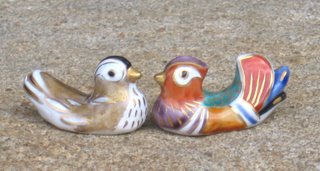:::::::::::::::::::::::::::::::::::::::::::::::::::::::::::::::::::::::::::::::::::::::::::::::::::::
Matsuo Basho 松尾芭蕉
Matsuo Bashoo Matsuo Bashō
furu ike ya kawazu tobikomu mizu no oto
古池や 蛙飛び込む 水の音
One Hundred Frogs: Hiroaki Sato

From Renga to Haiku to English
1983

From Matsuo Basho to Allen Ginsberg
ISBN 0834801760
:::::::::::::::::::::::::::::::::::::::::::::::::::::::::::::::::::::::::::::::::::::::::::::::::::::
........................................... mizu no oto 水の音
Some of my musings about translating this line !
Sound of Water, Water of Sound
:::::::::::::::::::::::::::::::::::::::::::::::::::::::::::::::::::::::::::::::::::::::::::::::::::::
Matsuo Basho, Basho Memorial Day and some more of my information:
I especially recomend the book by Toshiharu Oseko 尾迫利治 for translators.
Basho's Haiku
Produced by Maruzen, 1990
Basho Memorial day, Bashoo ki 芭蕉忌
Matsuo Basho Information
:::::::::::::::::::::::::::::::::::::::::::::::::::::::::::::::::::::::::::::::::::::::::::::::::::::
There are no greater clichés among haiku circles than quoting Basho's frog haiku.
Basho's frog haiku is almost definitely the most famous haiku ever composed on this planet.
Read an insightful discussion HERE
© Susumu Takiguchi
:::::::::::::::::::::::::::::::::::::::::::::::::::::::::::::::::::::::::::::::::::::::::::::::::::::
Quote from the SHIKI archives
A quick note to clarify what seems to be a bit of confusion regarding Hiroaki Sato's "One Hundred Frogs."
by Michael Dylan Welch
David McMurray and Jane Reichhold are actually referring to TWO different books with the *same* title by the *same* author, both published by the *same* publisher.
Sato's original book is titled "One Hundred Frogs: From Renga to Haiku to English" (Weatherhill, 1983). This book is 242 pages long, and contains a history of renga and haiku in Japan and in the English language. Chapter 7 contains one hundred (+) translations of Basho's famous "old pond" haiku. It is *this* chapter that McMurray has seen published as a separate new book.
That second book is called "One Hundred Frogs" (Weatherhill, 1995 -- note *no* subtitle). This book culls all the "old pond" translations from the 1993 book, plus adds a few more (I think there are 130+ now), with no other essays except the introduction. This more recent book is also smaller in dimension, yet it is improved by wonderful illustrations by J. C. Brown -- and if you "flip" the pages, you'll see the drawings of a frog jumping into a pond become animated! (Yup, it's a flip book too, although you have to figure that out on your own...).
Anyway, as you can see, these are two very different, yet overlapping books. I recommend
both.
http://haiku.cc.ehime-u.ac.jp/shiki.archive/9603/0451.html
Discussion about this haiku:
hamaguri no / futami ni wakare / yuku aki zo
http://haiku.cc.ehime-u.ac.jp/~shiki/shiki-workshop.archive/html/199807/0106.html
:::::::::::::::::::::::::::::::::::::::::::::::::::::::::::::::::::::::::::::::::::::::::::::::::::::
Basho in Russian
МАЦУО БАСЁ (1644-1694) 芭蕉 – Bashô
http://homepage.ntlworld.com/dmitrismirnov/BASHO_Haiku_Y.html
:::::::::::::::::::::::::::::::::::::::::::::::::::::::::::::::::::::::::::::::::::::::::::::::::::::
. Matsuo Basho 松尾芭蕉 - Archives of the WKD .
:::::::::::::::::::::::::::::::::::::::::::::
[ . BACK to DARUMA MUSEUM TOP . ]
[ . BACK to WORLDKIGO . TOP . ]
:::::::::::::::::::::::::::::::::::::::::::::::::::::::::::::::::::::::::::::::::::::::::::::::::::::








3 comments:
.
Leap Year of the Frog 2008
Actually,
according to Basho's trusted disciple, Kagami Shiko (1665-1731) in his book, The Pine Field of Kuzo (Basho gave his disciple the book's name), Basho heard in the distance, the sound of frogs jumping in water and successfully juxtaposed what he heard with what he imagined, the frogs jumping in an old pond, as evident from the use of HEARING (versus seeing).
Basho did not view the scene, he heard and then embellished what he heard with his imagination. One is the world of hearing and the other is the world of the mind.
Shiki it should be pointed out was an artist and was much influenced by western though and realism, which is not impressionism. They are two distinct schools of thought and painting, which at the same time, influenced both painting and writing.
As Gilbert states, Basho's "haiku is not shasei, an objective sketch."
robert wilson
http://groups.yahoo.com/group/simply_haiku/message/21779
Fortunately for us, his disciple, Kagami Shiko, tells of Basho's mindset and intent when composing this famous haiku. And since Basho himself gave his disciple the book's title, it would be safe to assume that Basho was familiar with and approved of the book's contents (The Pine Field of Kuzo). Of course Basho was listening to more than one frog. Frogs usually sing in tandem as a chorus. He heard frogs splashing. The key word here is WATER'S SOUND which is ascertained via HEARING. IF we go with the standard interpretation, a frog jumped into an old pond and then the splash of water, we have a haiku that is far from earth shaking. it is shasei, an objective sketch. Writes Shiko:
It was the traditional time of regret for the ending of spring. There were sounds of frogs jumping into the water in intervals. From this rather inarticulate atmosphere Basho hit on the idea of the 7-5-on "kawazu tobikomu mizu no oto" then, Kikaku offered his suggestion of "yamabuke ya" for the capping [first line] metric of 5-on. However, Basho rejected thus suggestion, finally deciding on "furuike." Translated by Richard Gilbert/.
As I stated in my previous post, Basho first heard the sound of frogs jumping in intervals in the water. He then used his imagination and juxtaposed the sound of the frogs jumping with picture his imagination conjured up, that of the frogs jumping into an old pond... with this picture in mind, Basho's haiku transcends the shasei realism of previous interpretations and becomes a richer, deeper poem... the combination of hearing and imagination... what is and what is imagined.
I suggest you purchase a copy of Professor Gilbert's important new book, Poems of Consciousness: Contemporary Japanese and English Language Haiku in Cross-cultural Perspective, which does a detailed thorough analysis of Basho's famous haiku.
robert d. wilson
http://groups.yahoo.com/group/simply_haiku/message/21781
Post a Comment